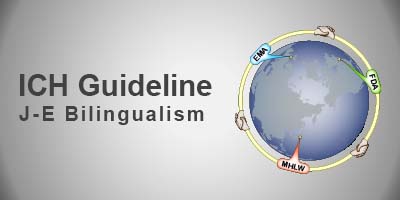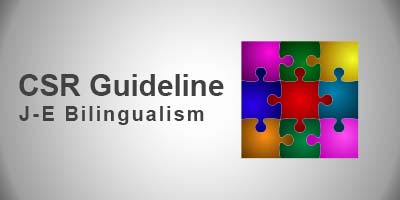医薬審第548号
平成10年7月9日
ICH Harmonised Tripartite Guideline
Recommended for Adoption at Step 4 of the ICH Process on 16 July 1997 by the ICH Steering Committee
医薬品のがん原性を検出するための試験に関するガイダンス
1. 目的
この文書は、医薬品のがん原性を評価する方法に関してのガイダンスを示すものである。
TESTING FOR CARCINOGENICITY OF PHARMACEUTICALS
1. OBJECTIVE
This document provides guidance on approaches for evaluating the carcinogenic potential of pharmaceuticals.
2. 背景
従来の三極 (欧州、日本、米国) における医薬品のがん原性を評価するための行政上の要求は、通常、ラットとマウスの2 種のげっ歯類を用いる長期のがん原性試験を実施することと規定されていた。これらの試験には費用がかかりすぎることや、きわめて多くの動物が用いられていることから、
ヒトへの安全性を損なうことなく2 種のがん原性試験を1 種にすることができるかどうかを検討することはICH の使命にかなうものである。
このガイダンスは、他のガイダンス、特に下記のガイダンスと共に読まれるべきである。
S1A: 医薬品におけるがん原性試験の必要性に関するガイダンス
S1C: 医薬品のがん原性試験のための用量選択のガイダンス
化学物質 (医薬品を含む) のヒトでのがん原性を評価するためのげっ歯類を用いた長期がん原性試験は現在、批判され、改善を求められている。1970 年代の始めから、多くの研究者によって、多種多様の実験的手法によってげっ歯類に腫瘍を発生させることが可能であることを示す多くの研究がなされてきた。それらの研究のいくつかは、現在においては、ヒトへのリスクアセスメントにおいてほとんど (あるいは全く) 関係のないものがあることが示されている。本ガイダンスでは、がん原性評価の必要な医薬品において通常実施されている2 種のげっ歯類による長期がん原性試験を実施せずに、発がん潜在能を評価する実験的方法が概説されている。個々のラットやマウスのがん原性試験がどのように評価に寄与しているか、また、ラットあるいはマウス1 種のみを用いることによってヒトのリスクアセスメントのための必要な情報が失われる結果になるか否かが、6 団体・規制当局の調査により検討された。これらの調査はInternational Agency for Research on Cancer (IARC),the U.S. Food and Drug Administration (FDA), the U.S. Physicians’ Desk Reference (PDR), the Japanese Pharmaceutical Manufacturers’ Association (JPMA), the EU European Medicines Evaluation Agency (Committee for Proprietary Medicinal Products) (CPMP) およびUK Center for Medicines Research (CMR) によりなされたものである。これらの調査の規模とその解析の主要な結論については第3 回ICH (1995) の報告集を参照されたい。
医薬品の治療用途と関係のないような長期がん原性試験の陽性結果は、行政側評価者、医薬品開発会社および社会全般のいずれもが苦慮しているところである。長期のがん原性試験を1 動物種 (2種ではなく) にすることにより、考え方を変えれば、ヒトに関連するがん原性を明らかにする他の試験方法へ資源を向ける機会を与えることになろう。
1 つの長期がん原性試験と他の適切な実験手法から得られたデータを総合的に評価する科学的判断の使用と定義される、「科学的根拠の重要度 (weight of evidence) 」の評価法は、ヒトに対するがん原性リスクの評価をさらに向上させることができる。
2. BACKGROUND
Historically, the regulatory requirements for the assessment of the carcinogenic potential of pharmaceuticals in the three regions (E.U., Japan, U.S.) provided for the conduct of long-term carcinogenicity studies in two rodent species, usually the rat and the mouse. Given the cost of these studies and their extensive use of animals, it is in keeping with the mission of ICH to examine whether this practice requiring long term carcinogenicity studies in two species could be reduced without compromising human safety.
This guideline should be read in conjunction with other guidelines (see Annex), especially:
S1.A: Guideline on the Need for Carcinogenicity Studies of Pharmaceuticals.
S1.C: Dose Selection for Carcinogenicity Studies of Pharmaceuticals.
Long-term rodent carcinogenicity studies for assessing the carcinogenic potential of chemicals (including pharmaceuticals) to humans are currently receiving critical examination. Since the early 1970’s, many investigations have shown that it is possible to provoke a carcinogenic response in rodents by a diversity of experimental procedures, some of which are now considered to have little or no relevance for human risk assessment. This guideline outlines experimental approaches to the evaluation of carcinogenic potential that may obviate the necessity for the routine conduct of two long-term rodent carcinogenicity studies for those pharmaceuticals that need such evaluation. The relative individual contribution of rat and mouse carcinogenicity studies and whether the use of rats or mice alone would result in a significant loss of information on carcinogenicity relevant to human risk assessment has been addressed by six surveys of the data for human pharmaceuticals. The surveys were those of the International Agency for Research on Cancer (IARC), the U.S. Food and Drug Administration (FDA), the U.S. Physicians’ Desk Reference (PDR), the Japanese Pharmaceutical Manufacturers’ Association (JPMA), the EU Committee for Proprietary Medicinal Products (CPMP), and the UK Centre for Medicines Research (CMR). The dimensions of these surveys and the principal conclusions of the analyses can be found in the Proceedings of the Third International Conference (1995) on Harmonization.
Positive results in long-term carcinogenicity studies that are not relevant to the therapeutic use of a pharmaceutical present a dilemma to all parties: regulatory reviewers, companies developing drugs and the public at large. The conduct of one long-term carcinogenicity study (rather than two long term studies) would, in part, allow resources to be diverted to other approaches to uncover potential carcinogenicity relevant to humans. A “weight of evidence” approach, that is use of scientific judgment in evaluation of the totality of the data derived from one long-term carcinogenicity study along with other appropriate experimental investigations, enhances the assessment of carcinogenic risk to humans.
3. ガイダンスの範囲
このガイダンスは、ガイダンス S1A に示されているように、がん原性試験を必要とするすべての医薬品に適用される。バイオテクノロジー応用医薬品についてはガイドラインS6 を参照のこと。
3. SCOPE OF THE GUIDELINE
The guideline embraces all pharmaceutical agents that need carcinogenicity testing as indicated in Guideline S1A. For biotechnology-derived pharmaceuticals refer to Guideline S6.
4. ガイダンス
4.1 序文
医薬品のがん原性を検索するための対策は、いくつかの重要な情報が得られてからなされるが、それらには遺伝毒性 (ガイダンス S2A およびS2B)、想定される患者集団、臨床適用量 (ガイダンス S1A)、動物とヒトにおける薬力学 (選択性、用量反応性) (ガイダンス S1C) ならびに反復投与毒性などである。動物 (非げっ歯類を含む) を用いた反復投与毒性試験において、被験物質に、ヒトへのリスク因子として考えられる免疫抑制作用、ホルモン活性作用や他の作用が示された場合、このような情報はがん原性評価のためのその後の試験計画にあたって考慮されるべきである (注1 参照) 。
4. THE GUIDELINE
4.1 Preamble
The strategy for testing the carcinogenic potential of a pharmaceutical is developed only after the acquisition of certain key units of information, including the results of genetic toxicology (Guidelines S2A and S2B), intended patient population, clinical dosage regimen (Guideline S1A), pharmacodynamics in animals and in humans (selectivity, dose-response) (Guideline S1C), and repeated-dose toxicology studies. Repeated-dose toxicology studies in any species (including nonrodents) may indicate that the test compound possesses immunosuppressant properties, hormonal activity, or other activity considered to be a risk factor for humans, and this information should be considered in the design of any further studies for the assessment of carcinogenic potential (see also Note 1).
4.2 発がん潜在能を検出する実験的方法
上記の序文に引用されている情報に基づいて試験方法を選択する際には、融通性と判断力を働かせるべきである。発がん過程は複雑であることから、全ての医薬品のヒトに対する発がん潜在能を確実に検出するための単一の試験方法はない。
基本原則
基本的な考え方は1種の長期げっ歯類がん原性試験に加えて4.2.2 項に述べるタイプの新たな追加試験をもう一つ実施することが骨子となる(注2 参照)。その新たな試験系は長期がん原性試験を補足し、その長期試験からは容易に得られることができないような追加情報を提供することができる。
4.2 Experimental approaches to testing for carcinogenic potential
Flexibility and judgment should be exercised in the choice of an approach which should be influenced by the information cited in the above preamble. Given the complexity of the process of carcinogenesis, no single experimental approach can be expected to predict the carcinogenic potential of all pharmaceuticals for humans.
The basic principle:
The basic scheme comprises one long-term rodent carcinogenicity study, plus one other study of the type mentioned in §4.2.2 that supplements the long term carcinogenicity study and provides additional information that is not readily available from the long term assay.
4.2.1 長期がん原性試験における動物種の選択
次に示すような情報を考慮した上で、選択される動物種は適切なものとすべきである。
(a) 薬理学
(b) 反復投与毒性試験
(c) 代謝 (ガイダンスS1C およびS3A も参照)
(d) トキシコキネティクス (ガイダンスS1C、S3A ならびにS3B も参照)
(e) 投与経路 (例えば通常あまり用いられない経路、すなわち経皮、吸入など)
もしも1 種を選ぶのに明らかな根拠がなければ、長期がん原性試験においてはラットを選択することが推奨される。この見解は6項で示される要因に基づいている。
4.2.1 Choice of species for a long-term carcinogenicity study
The species selected should be appropriate, based on considerations that include the following:
(a) Pharmacology.
(b) Repeated-dose toxicology.
(c) Metabolism (see also Guidelines S1C and S3A).
(d) Toxicokinetics (see also Guidelines S1C, S3A, and S3B).
(e) Route of administration (e.g., less common routes such as dermal and inhalation).
In the absence of clear evidence favoring one species, it is recommended that the rat be selected. This view is based on the factors discussed in §6.
4.2.2 In vivo におけるがん原性検出のための追加試験
追加試験としては、以下の(a)ないし(b) が挙げられる (注2 参照) 。
(a) 短期あるいは中期のIn vivo げっ歯類試験系
可能性のある試験として、 In vivo におけるがん原性指標を考慮したモデルに注目すべきである。その例として、げっ歯類の2 段階発がんモデル (イニシエーション・プロモーションモデル) やトランスジェニックげっ歯類動物ないし新生児げっ歯類動物を用いた発がんモデルが挙げられる (注3参照) 。
(b) もう1 種のげっ歯類動物による長期がん原性試験の実施も引き続き容認される。
4.2.2 Additional in vivo tests for carcinogenicity
Additional tests may be either (a) or (b) (see Note 2).
(a) Short or medium-term in vivo rodent test systems.
Possibilities should focus on the use of in vivo models providing insight into carcinogenic endpoints. These may include models of initiation-promotion in rodents,
or models of carcinogenesis using transgenic or neonatal rodents (Note 3).
(b) A long-term carcinogenicity study in a second rodent species is still considered acceptable (see § 4.2.1 for considerations).
4.2.3 短期あるいは中期がん原性試験系の選択上考慮すべき点
発がん潜在能の評価のための総合的な科学的根拠の重要度 (weight of evidence) に有用な情報を提供し得る試験法の選択には十分な注意が払われるべきである。この選択のための根拠は、文書化されるべきであり、また、試験法の選択時において利用できる医薬品についての情報(薬力学やヒトとの暴露の違い等)あるいはその他の信頼できる情報に基づくべきである。この根拠には、その医薬品のために選択された試験法の長所および短所についての科学的な考察も含むべきである (注4 参照) 。
4.2.3 Considerations in the choice of short or medium term tests for carcinogenicity
Emphasis should be placed on selection of a test method that can contribute information valuable to the overall “weight of evidence” for the assessment of carcinogenic potential. The rationale for this choice should be documented and based on information available at the time of method selection about the pharmaceutical such as pharmacodynamics and exposure compared to human or any other information that may be relevant. This rationale should include a scientific discussion of the strengths and weaknesses of the method selected for the pharmaceutical (see Note 4).
5. メカニズム研究
メカニズム研究はがん原性試験において腫瘍発生を認めた場合、その説明としてしばしば有用であり、ヒトのリスクアセスメントに関連するか、あるいはリスクを予見する情報を提供してくれる。
探索的研究の必要性やその計画は、医薬品に特有な性質やがん原性試験の特異的な結果によって左右される。用量依存性やがん原性試験の実施条件との関連性はこれらの探索的研究において評価されるべきである。以下にその例をあげる。
5.1 細胞変化
関連する組織について、細胞レベルの変化を形態学的、組織化学的あるいは機能的な指標を用いて検査することができる。時には、アポトーシス、細胞増殖活性、肝の細胞変異巣、細胞間連絡の変化などについて、用量相関性に注目して検討される。
5. MECHANISTIC STUDIES
Mechanistic studies are often useful for the interpretation of tumor findings in a carcinogenicity study and can provide a perspective on their relevance to human risk assessment. The need for or the design of an investigative study will be dictated by the particular properties of the drug and/or the specific results from the carcinogenicity testing. Dose dependency and the relationship to carcinogenicity study conditions should be evaluated in these investigational studies. Suggestions include:
5.1 Cellular changes
Relevant tissues may be examined for changes at the cellular level using morphological, histochemical, or functional criteria. As appropriate, attention may be directed to such changes as the dose-relationships for apoptosis, cell proliferation, liver foci of cellular alteration, or changes in intercellular communication.
5.2 生化学的測定
催腫瘍性についての想定される機序にもよるが、検討すべき検査指標としては以下のものがあげられる。
・ 循環血液中のホルモン量 (例えばT3/T4、TSH、プロラクチン)
・成長因子
・α2u-グロブリンのような蛋白への結合
・組織酵素活性等
例えば、ホルモン不均衡の仮説に対しては、ホルモン不均衡を少なくとも部分的に補う試験を実施することにより、その仮説を検証することができる。
5.2. Biochemical measurements
Depending on the putative mode of tumorigenic action, investigations could involve measurements of:
· plasma hormone levels, e.g. T3/T4, TSH, prolactin
· growth factors
· binding to proteins such as a2m-globulin
· tissue enzyme activity, etc.
In some situations, it may be possible to test a hypothesis of, for example, a hormone imbalance with another study in which the imbalance has been, at least in part, compensated.
5.3 追加の遺伝毒性試験の考察 (ガイダンスS2A およびS2B 参照)
標準的な遺伝毒性試験の組み合わせにおいて陰性であった物質について、明らかな非遺伝毒性メカニズムの証拠がないにもかかわらず、がん原性試験で陽性になった場合は、適切なモデルの追加遺伝毒性試験が必要なこともある。追加試験には、In vitro 試験の代謝活性化の条件を変えたり、腫瘍発生の標的臓器における遺伝毒性障害を計測する In vivo 試験等が含まれる (例えば、DNA 障害や修復試験、32P-ポストラベリング法、導入遺伝子における変異の誘発等)。
5.3. Considerations for additional genotoxicity testing (see Guidelines S2A and S2B)
Additional genotoxicity testing in appropriate models may be invoked for compounds that were negative in the standard test battery but which have shown effects in a carcinogenicity test with no clear evidence for an epigenetic mechanism. Additional testing can include modified conditions for metabolic activation in in vitro tests or can include in vivo tests measuring genotoxic damage in target organs of tumor induction (e.g., DNA damage and repair tests, 32P-postlabeling, mutation induction in transgenes).
5.4 試験計画の変更
被験物質の腫瘍発現機序を明らかにするためには、試験計画の変更が推奨される場合もある。その変更には、例えば、間欠的投与の結果や、投薬中止後の細胞変化の可逆性等を探索するための試験群の追加が含まれる。
5.4. Modified protocols
Modified protocols may be helpful to clarify the mode of tumorigenic action of the test substance.
Such protocols might include groups of animals to explore, for example, the consequence of interrupted dosage regimens, or the reversibility of cellular changes after cessation of dosing.
6. 長期がん原性試験に最適な動物種を選択する際の総括的な考え方
他に明確な根拠がなければ、長期がん原性試験で選択する動物種は通常ラットであることを支持するいくつかの総括的な考え方がある。
6.1 医薬品のデータベース調査からの情報
6 種のデータベースの調査においては、遺伝毒性、腫瘍発生率、動物の系統、投与経路及び投与量、薬理活性または薬効、開発ないしは規制の状況、がん原性試験結果に関連した開発中止の理由等が調査された。当然、各調査間では多くの重複例がみられたが、それは確かな結論を導くのに必ずしも障害にはならなかった。
解析による主な総合的結論は以下の通りである。
a.医薬品に関しては、マウスに腫瘍が発生したことが理由で規制の対象になったと判断された事例はほとんどないが、マウスのデータは科学的根拠の重要度 (Weight of evidence) による判断と、げっ歯類 2 種に腫瘍がみられた物質の同定に役立っていた。
b.1種の動物のみに発がん性所見がみられた化合物のうち、「ラットのみ」の化合物の数は「マウスのみ」の化合物の数の約 2 倍であり、単純な意味で、ラットはマウスよりも感受性が高いといえる。
c.文献引用可能な他の調査と同様に、医薬品についての調査においてもげっ歯類の肝腫瘍が高い発生率を示すことが特徴的であった。マウスの肝腫瘍が非遺伝毒性物質に対し高い感受性を示すことは多くのシンポジウムやワークショップの主題になっている。マウスの腫瘍はヒトの発がリスクに対し、必ずしも関連するとは思われず、しばしば誤った結論を導く可能性のあることが結論されている。
6. GENERAL CONSIDERATIONS IN THE CHOICE OF AN APPROPRIATE SPECIES FOR LONG TERM CARCINOGENICITY TESTING
There are several general considerations which, in the absence of other clear indications, suggest that the rat will normally be the species of choice for a long term carcinogenicity study.
6.1. Information from surveys on pharmaceuticals
In the six analyses, attention was given to data on genetic toxicology, tumor incidence, strain of animal, route and dosage regimen, pharmacological or therapeutic activity, development and/or regulatory status, and, if relevant, reason for termination of development. Inevitably, there was considerable overlap of the data, but that is not necessarily an impediment to drawing valid conclusions.
The main overall conclusions from the analysis were:
a. Although very few instances have been identified of mouse tumors being the sole reason for regulatory action concerning a pharmaceutical, data from this species may have contributed to a “weight of evidence” decision and in identifying agents that caused tumors in two rodent species.
b. Of the compounds displaying carcinogenic activity in only one species, the number of “ratonly” compounds was about double the number of “mouse-only” compounds, implying in a simplistic sense that the rat is more “sensitive” than the mouse.
c. As with other surveys accessible in the literature, the data for pharmaceuticals were dominated by the high incidence of rodent liver tumors. The high susceptibility of mouse liver to nongenotoxic chemicals has been the subject of many symposia and workshops. These have concluded that these tumors may not always have relevance to carcinogenic risk in humans and can potentially be misleading.
6.2 メカニズム研究の可能性
げっ歯類における非遺伝毒性物質の発がんには、種、系統および標的臓器についての高度な特異性が明らかで、用量反応関係において閾値の存在が明確なのが特徴である。近年のメカニズム研究により、げっ歯類モデルに特異的な反応とヒトに関係する可能性のある変化を区別できるようになっている。研究の進歩はしばしば種や組織特異性についての知見が増えることと関連している。例えば、レセプターの関与する発がんが重要であるとの認識がますます高くなってきている。これらの研究は、ほとんどの場合ラットでなされており、マウスを用いることは稀である。
6.2. Potential to study mechanisms
The carcinogenic activity of nongenotoxic chemicals in rodents is characterized by a high degree of species, strain, and target organ specificity and by the existence of thresholds in the dose-response relationship. Mechanistic studies in recent years have permitted the distinction between effects that are specific to the rodent model and those that are likely to have relevance for humans. Progress has often been associated with increased understanding of species and tissue specificity. For example, receptor-mediated carcinogenesis is being recognized as of growing importance. Most of these advances are being made in the rat, and only rarely in the mouse.
6.3 代謝動態
代謝的観点からは、ラットもマウスも長期がん原性試験を実施するのに最も適切な動物種であるとは思われない。しかしながら、現在、薬物動態と薬力学の関係が注目されてきており、更にP-450アイソザイムに関する知識も急速に進歩している。これらの研究のほとんどすべてがラットとヒトに限られて実施されている。したがって、少なくとも近い将来、代謝に関与するP-450 アイソザイムについての特定の情報が評価において重要である限り、メカニズム研究においてマウスが有用な代謝の情報を供給するとは考えられない。
6.3. Metabolic disposition
Neither rats nor mice would seem, on metabolic grounds, to be a priori generally more suitable for the conduct of long term carcinogenicity studies. However, much attention is now being given to pharmacokinetic-pharmacodynamic relationships and rapid progress is occurring in knowledge of the P-450 isozymes that mediate the biotransformation of drugs. Most of this research activity is confined to rats and humans. Therefore, in the near future at least, where specific information on the P-450 isozymes involved in biotransformation is critical for the evaluation it appears that mice would be less likely to provide this mechanistic information.
6.4 実用面
上述の二つの項目に加えてマウスを用いた探索的研究が実行可能かどうかという問題がある。大きさの点のみから考えてもマウスは極めて不利であり、一連の血液サンプルの採取や顕微的手術/カテーテル挿入、および器官重量測定などの際に問題となる。採血をするためには動物を屠殺する必要があり、その結果、マウスをそのような研究に用いる場合には多くの余分な動物が必要になる。
6.4. Practicality
Pertinent to the above two topics is the question of feasibility of investigative studies. Size considerations alone put the mouse at a severe disadvantage when it comes to the taking of serial blood samples, microsurgery/catheterization, and the weighing of organs. Blood sampling often requires the sacrifice of the animals, with the result that many extra animals may be needed when mice are subject to such investigations.
6.5 一種以上の動物による試験
現在使用可能な多くの短期および中期 In vivo 発がんモデルにはマウスが含まれている。発がん潜在能を一種以上の動物により検索することを考慮すべきであることから、これが重要かつ適切と考えられる場合には、ラットが長期がん原性試験にしばしば用いられることとなろう。
6.5. Testing in more than one species
Most of the currently available short and medium term in vivo models for carcinogenicity testing involve the use of mice. In order to allow testing in more than one species for carcinogenic potential, when this is considered important and appropriate, the rat will often be used in the long term carcinogenicity study.
6.6 例外
上述のような考慮にもかかわらず、ラットよりもマウスあるいはその他のげっ歯類の方がメカニズム、代謝あるいはその他の背景から、ヒトのリスクアセスメントのための長期がん原性試験に適切であると正当化されるような場合もあるかもしれない (4.2.1 項と比較)。そのような場合においては、短期ないし中期発がんモデルとしてなおマウスを用いることは容認される。
6.6. Exceptions
Despite the above considerations, there may be circumstances under which the mouse or another rodent species could be justified on mechanistic, metabolic, or other grounds as being a more appropriate species for the long term carcinogenicity study for human risk assessment (c.f. §4.2.1).
Under such circumstances it may still be acceptable to use the mouse as the short term or medium term model.
7. 発がん潜在能の評価
げっ歯類における医薬品の催腫瘍作用は、腫瘍の発生頻度や潜伏期間、ヒトと比較した場合でのげっ歯類における医薬品の薬物動態およびげっ歯類での発がんがヒトと関連するかの決め手となる補充的なまたメカニズム的な研究の結果から評価されるべきである。
上記の試験から得られた成績は、その試験系の科学的見地からみた有用度を考慮にいれた総合的な科学的根拠の重要度 (weight of evidence) の一部として考えるべきである。
7. EVALUATION OF CARCINOGENIC POTENTIAL
Evidence of tumorigenic effects of the drug in rodent models should be evaluated in light of the tumor incidence and latency, the pharmacokinetics of the drug in the rodent models as compared to humans, and data from any ancillary or mechanistic studies that are informative with respect to the relevance of the observed effects to humans.
The results from any tests cited above should be considered as part of the overall “weight of evidence” taking into account the scientific status of the test systems.
注
注1. 細胞トランスフォーメーション試験のようなIn vitro 試験からのデータは、化合物の選択時期において有用な情報となる。
注 2. もし1 種の短期ないし長期がん原性試験あるいは遺伝毒性試験の所見やその他の試験成績から、その医薬品が明らかにヒトに対して発がん性の危険性を示すようなことが示された場合には、第二の発がん性試験は必ずしも必要ないと思われる。
注 3. いくつかの試験法について、発がん性評価に有用か否かに関する研究が現在進められている。
一般的には、これらの試験法は、ヒトに外挿でき、ヒトに対するリスク評価に応用できると考えられている発がんメカニズムに基づくべきである。さらに、これらは長期がん原性試験を補完し、かつ、長期試験から容易に得られることができない追加情報をもたらすものでなければならない。
また、動物数、動物愛護や発がん評価過程における全体的な経済性等についても考慮されなければならない。下記の試験法は、上述の基準に合致し、今後の情報により改訂される可能性のある代表的な試験法リストである。
(a) げっ歯類を用いたイニシエーション・プロモーションモデル:肝発がん物質 (および肝発がん修飾物質) を検索するためのラットのイニシエーション・プロモーションモデルは、イニシエーターを用い、その後、被験物質を数週間投与する。もう一つの多臓器発がんモデルは5 つのイニシエーターを投与し、次いで被験物質を数ヶ月間投与する。
(b) p53+/-欠損モデル、Tg.AC モデル、TgHras2 モデル、XPA 欠損モデル等を含むいくつかのトランスジェニックマウスの試験。
(c) 新生児げっ歯類モデル。
注 4. 追加 In vivo 試験を採用するにあたって、注3 に記載されている基準に通常合致する試験法はいくつかあるが、個々の医薬品に対して全ての試験法が必ずしも同じように適しているとは限らない。以下の項目を、考慮すべきであり、またその選択の根拠として述べられる事柄の例である。
1. その検索は、長期試験で得られない有害性の確認およびリスク評価に有益な新しい情報をもたらすか。
2. その動物モデルからの結果は、その医薬品やこれと類似した構造や作用メカニズムを有する物質についての従来の知見から生ずる発がん過程に関連した疑問に答えられるか。
3. その動物モデルにおける医薬品の代謝は、ヒトに対する発がんリスクの評価を妨害するか。
4. ヒトでの暴露に合致した適切な全身ないし局所暴露が可能か。
5. その動物モデルはその目的とする使用に対してどの程度広範に検証されているか。ヒトにするがん原性を検索するための新しいIn vivo 試験法を使用する前には、その試験法が科学的根拠の重要度 (weight of evidence) に基づく評価に貢献出来るか否かについてその検出能を評価すべきである。多くの実験的研究が、これらの新しい短期ないし中期発がん試験の検証のため進行中である (1997 年の時点) 。これらの研究には、げっ歯類においてがん原性が知られており、その発がんメカニズムが解明されているいくつかの選ばれた医薬品やヒトに対してはがん原性がないと考えられている非発がん物質等が用いられている。
これらの検証のための研究結果が利用出来るようになった場合、どの試験系がヒトでの発がん性評価に最も適切かについてのより明確なガイダンスを示すことが可能であろう。
NOTES
Note 1. Data from in vitro assays, such as a cell transformation assay, can be useful at the compound selection stage.
Note 2. If the findings of a short or long-term carcinogenicity study and of genotoxicity tests and other data indicate that a pharmaceutical clearly poses a carcinogenic hazard to humans, a second carcinogenicity study would not usually be useful.
Note 3. Several experimental methods are under investigation to assess their utility in carcinogenicity assessment. Generally, the methods should be based on mechanisms of carcinogenisis that are believed relevant to humans and applicable to human risk assessment. Such studies should supplement the long term carcinogenicity study and provide additional information that is not readily available from the long term assay.
There should also be consideration given animal numbers, welfare and the overall economy of the carcinogenic evaluation process. The following is a representative list of some approaches that may meet these criteria and is likely to be revised in the light of further information.
(a) The initiation-promotion model in rodent. One initiation-promotion model for the detection of hepatocarcinogens (and modifiers of hepatocarcinogenicity) employs an initiator, followed by several weeks of exposure to the test substance. Another multiorgan carcinogenesis model employs up to five initiators followed by several months of exposure to the test substance.
(b) Several transgenic mouse assays including the p53+/- deficient model, the Tg.AC model, the TgHras2 model, the XPA deficient model, etc.
(c) The neonatal rodent tumorigenicity model.
Note 4. While there may be a number of approaches that will in general meet the criteria described in Note 3 for use as the additional in vivo study, not all may be equally suitable for a particular pharmaceutical. The following are examples of factors that should be considered and addressed in the rationale:
1. Can results from the model provide new information not expected to be available from the long-term study that is informative with respect to hazard identification and/or risk assessment?
2. Can results from the model address concerns related to the carcinogenic process arising from prior knowledge of the pharmaceutical or compounds with similar structures and/or mechanisms of action? These concerns may include genotoxic, mitogenic, promotional, or receptor-mediated effects, etc.
3. Does the metabolism of the pharmaceutical shown in the animal model affect the evaluation of carcinogenic risk for humans?
4. Is adequate systemic or local exposure attained in relation to human exposure?
5. How extensively has the model been evaluated for its intended use? Prior to using any new in vivo methods in testing the carcinogenic potential of pharmaceuticals for humans, it is critical that the method be evaluated for its ability to contribute to the weight of evidence assessment. Many experimental studies are in progress (1997) to evaluate the new short or medium tests for carcinogenic potential. These include selected pharmaceuticals with known potencies and known mechanism of carcinogenic activity in rodents, and also putative human non-carcinogens. When the results of these studies become available, it may be possible to offer clearer guidance on which of these tests have the most relevance for cancer assessment in humans.
Testing for Carcinogenicity of Pharmaceuticals
引用した他のICH ガイダンス
・ ガイダンスS2A: 医薬品のための遺伝毒性試験の特定項目に関するガイダンス (Notes for Guidance on Specific Aspects of Regulatory Genotoxicity Tests)
・ ガイダンスS2B: 医薬品の遺伝毒性試験の標準的組み合わせ (A Standard Battery of Genotoxicity Testing of Pharmaceuticals)
・ ガイダンスS3A: トキシコキネティクス(毒性試験における全身的暴露の評価)に関するガイダンス(Notes for Guidance on Toxicokinetics. The assessment of Systemic Exposure in Toxicity Studies)
・ ガイダンスS3B: 反復投与組織分布試験ガイダンス (Guidance on Repeat-Dose Tissue Distribution Studies)
・ ガイドラインS6: バイオテクノロジー応用医薬品の非臨床試験ガイドライン (Preclinical Testing of Biotechnology-derived Pharmaceuticals)
ANNEX: Other ICH Guidelines Cited
Guideline S2A: Notes for Guidance on Specific Aspects of Regulatory Genotoxicity Tests.
Guideline S2B: A Standard Battery of Genotoxicity Testing of Pharmaceuticals.
Guideline S3A: Notes for Guidance on Toxicokinetics. The Assessment of Systemic Exposure in Toxicity Studies.
Guideline S3B: Guidance on Repeat-Dose Tissue Distribution Studies.
Guideline S6: Preclinical Testing of Biotechnology-derived Pharmaceuticals.










